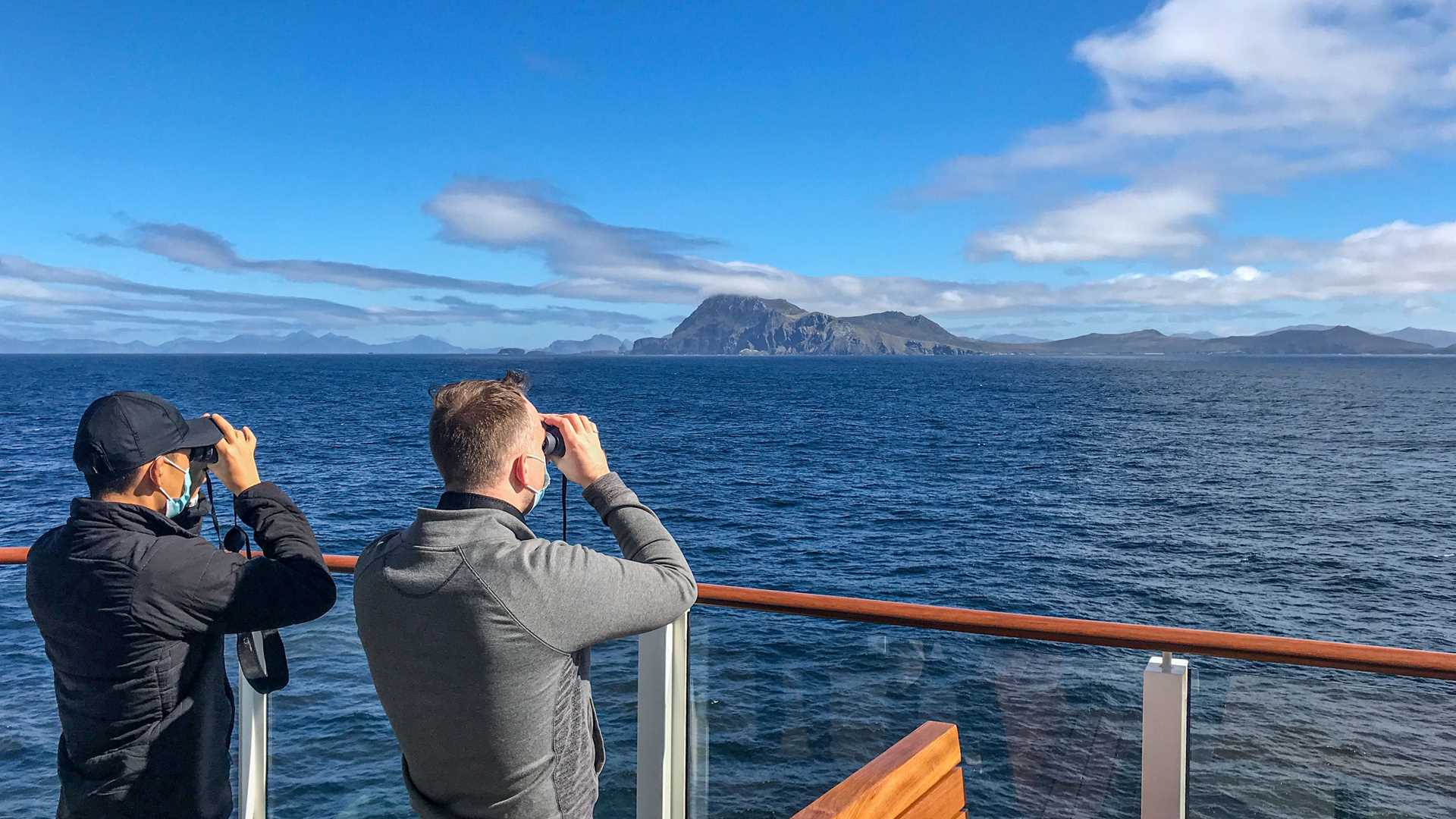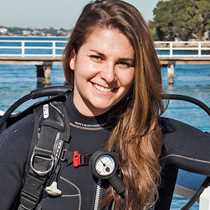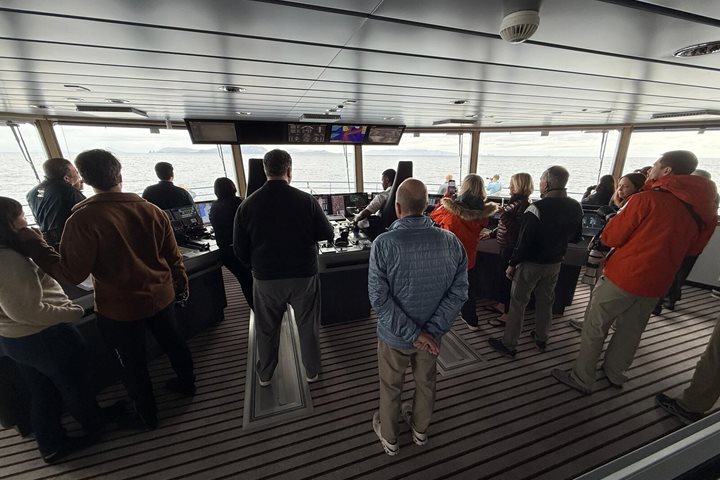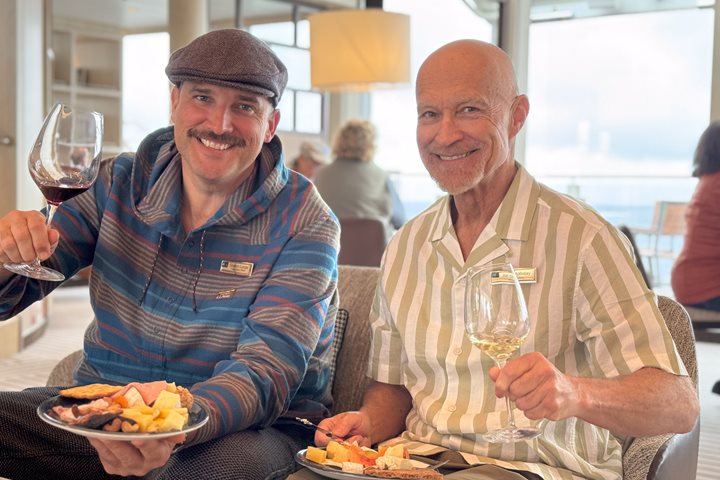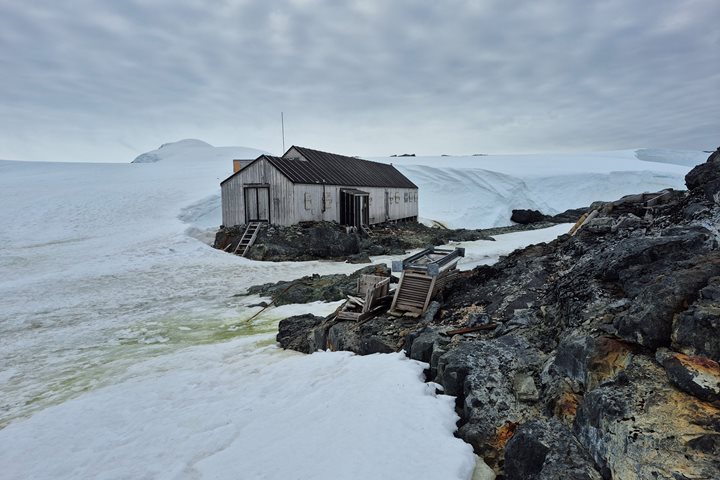After an amazing time exploring the Antarctic Peninsula, we awoke on the final day of our journey to blue skies and wonderfully calm seas as we neared the end of the infamous Drake Passage. Right out of the gates in the morning, Naturalist Madalena Patacho told us the story of Magellan, before our attention was drawn to the slight detour we had made to sail by Cape Horn. As we made our way towards the Beagle Channel, we enjoyed views of Peale’s dolphins riding the X-bow of the National Geographic Endurance. Soon after lunch, the fresh breeze beckoned us outside again to appreciate the smell of earth and trees as we made our way back into the southern tip of South America, just in time to listen to naturalist Conor Ryan give a talk on “The Smell of the Sea.” Several species of seabirds – from albatross to petrels and penguins – and views of sei whales were seen around the ship in the afternoon. We finally rounded out our last day on board this magnificent ship with the world premiere of the Guest Slideshow, before celebrating our experience over the last 10 days at Captain Aaron Woods’ farewell cocktail party.
2/28/2025
Read
National Geographic Resolution
Northbound Drake Passage, Cape Horn, and the Beagle Channel
This morning, we had a later start than usual after a late night enjoying the crew show. Our galley team gifted us with a fulfilling brunch. We then had a brilliant forum about climate change with the participation of our panel of experts onboard. Afterward, our expedition leader called us to the bow to see Cape Horn, which was only a few miles ahead. The good weather allowed us to have a smooth and fast crossing, allowing extra time to swing by Cape Horn, the most southern tip of the Americas. Over the PA system, Steven provided a very interesting description of the historical importance of this area, then Pablo read a beautiful poem, a memorial to the seaman lost at sea. We could see the monument in the distance, two metal sheets that depict an albatross in flight. During the afternoon, we enjoyed Madalena’s presentation about Women in Antarctica. This was an incredible voyage through the struggles and delays of allowing women to participate in science and logistics in Antarctica. We entered the Beagle Channel around 17:00 and we encountered black-browed albatrosses, cormorants, dolphins, and whales. On our final approach to the beautiful city of Ushuaia, we passed by Les Eclaireurs Lighthouse and some of the seals that live in the Bridges Islands Archipelago.

